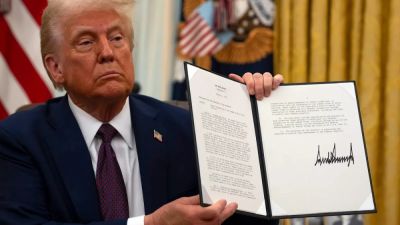Here's how tariffs on Canada, China and Mexico may impact U.S. consumers
President Donald Trump has repeatedly discussed imposing tariffs, both on the campaign trail and since taking office — and the first tranche, on goods from Canada, China and Mexico will take effect Feb. 1, the White House confirmed on Friday.
While there are still some unknowns, one thing is clear, economists said: U.S. consumers should brace for a negative financial impact.
It's «hard to find positives» from tariffs, said Mary Lovely, a senior fellow at the Peterson Institute for International Economics, whose research specializes in trade with China and global supply chains.
Trump plans to put 25% tariffs on Mexico and Canada, and a 10% duty on China, Karoline Leavitt, the White House press secretary, said Friday.
China, Mexico and Canada are the three largest trading partners with the U.S., as measured by imported goods. They respectively supplied about $536 billion, $455 billion, and $437 billion of goods to the U.S. in 2022, according to the Office of the U.S. Trade Representative.
Tariffs are a tax on foreign imports. U.S. businesses pay that tax to the federal government.
Many businesses will funnel those extra costs to customers — either directly or indirectly — which is why tariffs generally trigger higher prices for consumers, economists said.
«Part of these tariffs will be passed on to consumers,» Lovely said.
Americans could also find they have fewer choices for brands and products stocked on store shelves, she said.
There are still many question marks over the looming tariffs on Canada, China and Mexico.
For example, it's unclear if any imports will be exempt. Trump suggested this week, for example, that Canadian oil might be exempt. The White House said the tariffs will be open for public inspection on
Read more on cnbc.com



